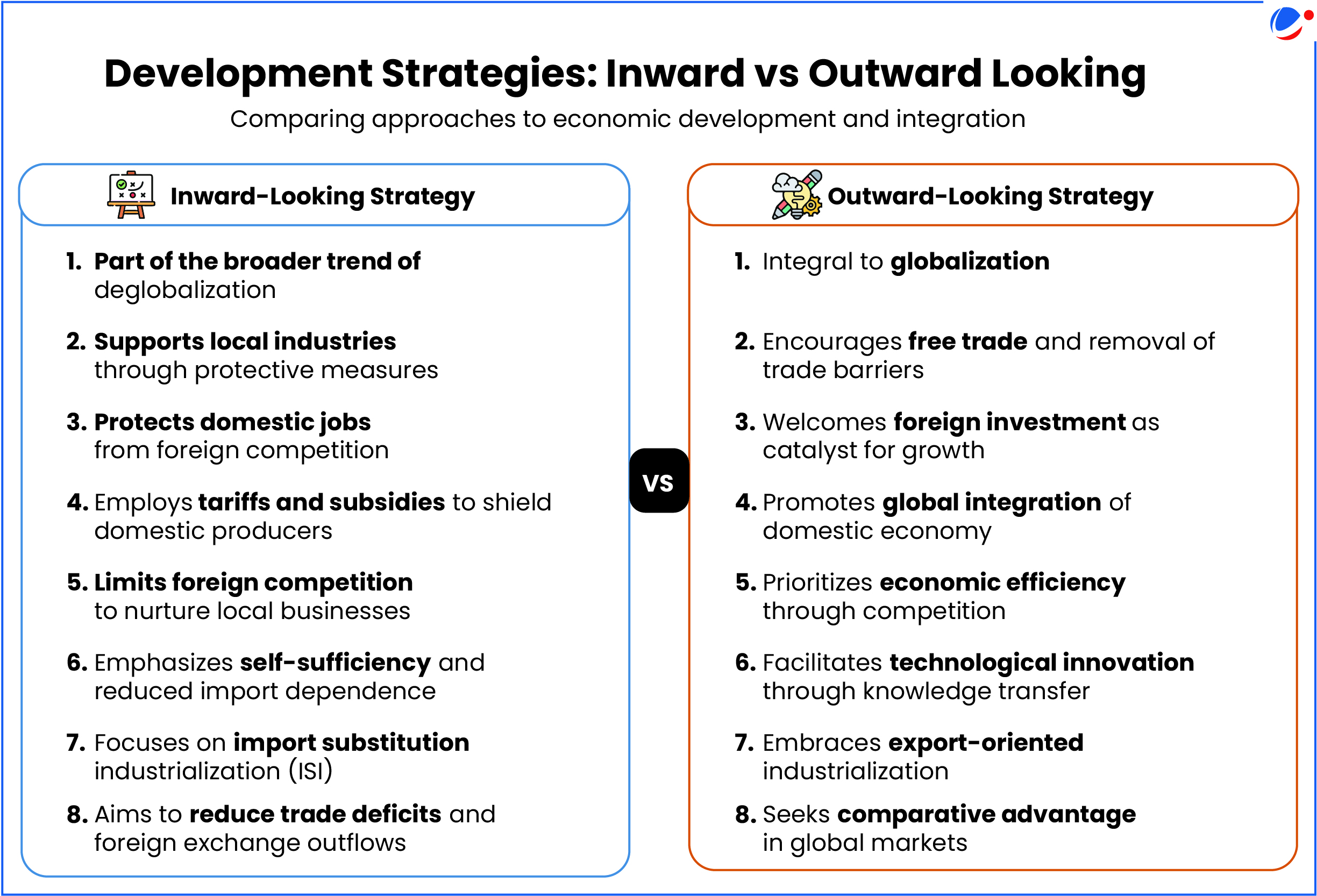Why in the News?
The U.S. introduced a Reciprocal Tariff Plan proposing a 10% base tax on all imports and higher tariffs on countries that have trade surpluses with the U.S.
More on the News
- This move signals a shift towards inward-looking development strategies, moving away from earlier outward-oriented policies.
- It reflects the broader trend of deglobalization and is seen as a key factor behind ongoing trade wars, especially between the U.S. and China.
- Other Key Examples of Inward-looking development Strategies
- China's strategic export controls of rare earth minerals like Germanium.
- India's Make in India, Product Linked Incentive (PLI) scheme, Atmanirbhar (Self-Reliant) India campaign.
Inward-Looking Development Strategies
- Definition: Inward-looking development strategy focuses on indigenous raw materials and production oriented towards the internal market. It prioritizes domestic economic development through policies that protect local industries and minimize external dependencies.
- Genesis: Different countries have adopted these strategies at different time periods historically. For example,
- Following the World War I and the Great Depression, countries in Latin America turned towards inward looking development strategy to counter the economic crises caused due to free trade that began in the 19th century.
- After independence, influenced by colonial exploitation and a desire for economic autonomy, the Indian government focused on building domestic industries and adopted a strong protectionist stance.

What Are the Major Objectives and Approaches for Inward-Looking Development Strategies?
Objectives | Approaches |
National Security and Strategic Autonomy |
|
Reclaiming Economic Sovereignty |
|
Reviving Domestic Manufacturing Employment and Strengthening Economic Competitiveness |
|
Addressing Trade Imbalances |
|
What could be potential negative impacts of Inward-Looking Development Strategies?
- Higher Consumer Prices: Protectionist policies such as tariffs and import restrictions often lead to increased production costs and reduced competition.
- These costs are ultimately passed on to consumers, resulting in higher prices and limited product choices in domestic markets.
- Loss of efficiency: While moving production back home (reshoring) or to allied nations (friendshoring) aims to reduce dependency on geopolitical rivals, it also leads to duplication of infrastructure and loss of efficiency.
- This transition can be costly and may not always deliver expected gains in resilience or job creation.
- Fragmentation of Global Supply Chains: Industries that rely on complex, multi-country inputs, such as electronics and automobiles, face delays, higher costs, and reduced innovation due to weakened international collaboration.
- Escalation of Trade Tensions and Wars: Protectionist strategies often trigger retaliatory measures from trade partners, escalating into trade wars.
- Emergence of Trade Blocs and Bilateralism: As multilateralism weakens, countries increasingly turn to regional trade blocs and bilateral agreements.
- This fragmented trade environment can exclude smaller or developing nations and reduce the effectiveness of global trade norms.
Conclusion
While inward-looking strategies can protect vulnerable industries and ensure economic sovereignty, they may lead to reduced economic efficiency and higher prices for consumers. Successful implementation typically requires complementary policies to enhance domestic productive capacity, technological capabilities, and human capital development. The optimal approach often involves selective protectionism in strategic sectors rather than complete economic isolation.



